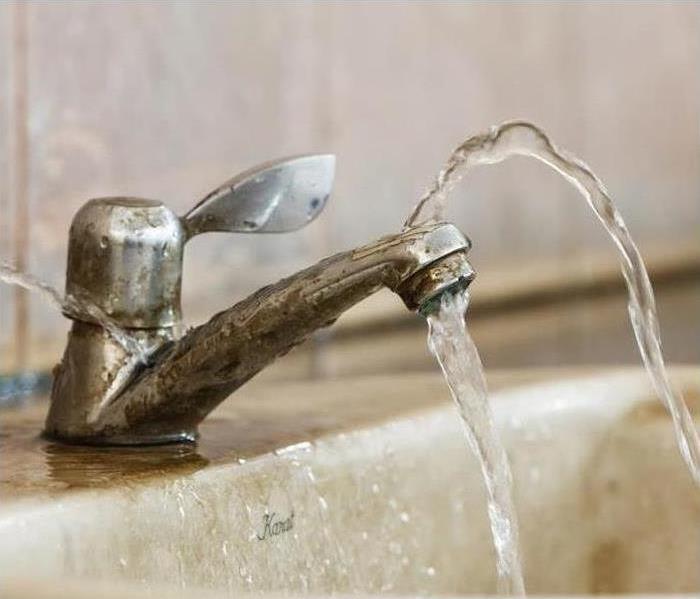4 Signs of water leaks in your home
12/20/2021 (Permalink)
 Visible water leaks are the easiest to spot; however, not all leaks are quite noticeable. Know the warning signs of a potential problem.
Visible water leaks are the easiest to spot; however, not all leaks are quite noticeable. Know the warning signs of a potential problem.
While water leaks are a common problem that any homeowner can face, you can’t always find them easily. Leaks that are hidden behind walls and floors can cause significant damage before they are located, and they are often the most challenging to repair. Here are four signs that can indicate hidden water leaks in your home.
Visible Water Damage
Unfortunately, you’ll most easily find a leak after it has already done some damage. Not all leaks lead to large, noticeable water spots, however, so you should be on the lookout for more subtle signs. Peeling or blistering in paint and wallpaper is often a sign that the drywall behind them is swelling with water. As the leak continues, you may notice the walls bowing inward in these areas as the drywall becomes completely saturated.
Several of the pipes and fittings under your bathroom floor can be points of failure, which makes this one of the most common places for leaks to occur. This will sometimes cause stains on the bathroom floor, or the tiles may begin to lift. However, gravity tends to draw the leaking water downward, so you should keep a watchful eye for stains on the ceiling of the room below your bathroom.
Unexplained Stale or Musty Odor
Stagnant water is likely to create a noticeable odor in any environment. If there is an unexplained stale or musty smell in one of the rooms of your home, a hidden leak is likely. Plumbing leaks can create an even more serious problem by emitting a lingering sewage odor.
Mold on Walls or Ceilings
Mold flourishes in environments that are dark and damp, so leaks behind the walls of your home can create the ideal conditions for mold growth. Because drywall is porous, mold will eventually grow through it and begin to show on the outside of the walls as well. Although mold is common where leaks occur, mold can grow in some places without necessarily indicating a leak.
Common examples of places in your home where moisture can build up are the areas below air conditioners, the space behind your fridge, the area around your shower or tub, and in damp spots in your basement. Mold in these areas should not be immediate cause for alarm about a leak. Hidden leaks will typically cause mold to grow on walls, floors, and ceilings that don't normally come in contact with water.
Increasing Water Bill
If your water bill has significantly increased but you haven’t had any significant change in water usage, a leak is likely to blame. According to the Environment Protection Agency, an average household can lose almost 10,000 gallons of water a year to leaks, and 10 percent of homes have leaks that waste 90 or more gallons of water per day! Needless to say, wasting this much water can cause a significant increase in your bill if the problem is not addressed in a timely manner.
If your water bill has sharply increased over a short amount of time, you should suspect a high-flow leak. These types of leaks should be fixed as soon as possible to minimize the risk of water damage to your home. A gradual increase in your bill may be caused by a smaller leak, but you should still have your plumbing inspected promptly before the leak begins to worsen over time.
Locating a hidden water leak is less difficult if you know the most common symptoms. Keep an eye out for these signs of water leaks, and contact us at SERVPRO of Western Lancaster for repairs if a leak has led to water damage in your home.






 24/7 Emergency Service
24/7 Emergency Service